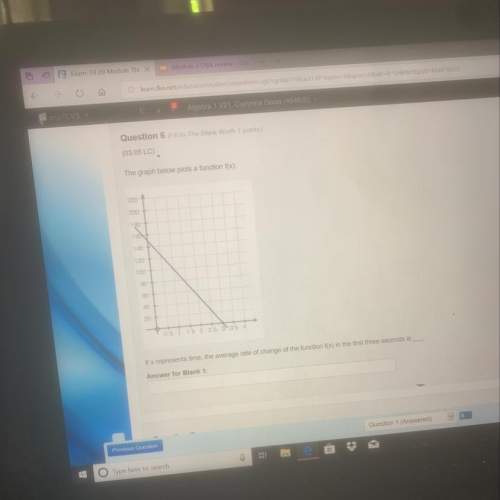
Mathematics, 08.02.2021 18:30 jonystroyer1020
Let T: Rn → Rn be an invertible linear transformation, and let S and U be functions from Rn into Rn such that
S(T(x)) = x and U (T(x)) = x for all x in R^n
Show that
U(v)= S(v) for all v in R^n
Required:
Compute S(v) and U(v).

Answers: 2


Other questions on the subject: Mathematics

Mathematics, 21.06.2019 16:00, crawfordricky84
Find the required measurements of the following trapezoids. a = 8 cm b = 16 cm h = 10 cm
Answers: 2

Mathematics, 21.06.2019 18:30, liltay12386
F(x)=x^3+4 question 6 options: the parent function is shifted up 4 units the parent function is shifted down 4 units the parent function is shifted left 4 units the parent function is shifted right 4 units
Answers: 1

Mathematics, 21.06.2019 18:30, lionscoachjose
Tod does not have any cookies. david gives jeff 8 cookies. then he splits half of the cookies he has left with tod. david let’s c represent the number of cookies that he starts with. he finds the number of cookies that tod has is 1/2 the difference of c and 8. write an expression to represent the number of cookies that tod has.
Answers: 2

Mathematics, 21.06.2019 19:00, ashrobbb
The annual snowfall in a town has a mean of 38 inches and a standard deviation of 10 inches. last year there were 63 inches of snow. find the number of standard deviations from the mean that is, rounded to two decimal places. 0.44 standard deviations below the mean 2.50 standard deviations below the mean 0.44 standard deviations above the mean 2.50 standard deviations above the mean
Answers: 3
You know the right answer?
Let T: Rn → Rn be an invertible linear transformation, and let S and U be functions from Rn into Rn...
Questions in other subjects:

Biology, 05.02.2021 09:10


Mathematics, 05.02.2021 09:10

Mathematics, 05.02.2021 09:10

Spanish, 05.02.2021 09:10

Mathematics, 05.02.2021 09:10

Biology, 05.02.2021 09:10

Mathematics, 05.02.2021 09:10

Social Studies, 05.02.2021 09:10

 is invertible lines transformation
is invertible lines transformation ![S[T(x)]=x \ and \ V[T(x)]=x \\\\t'x \ \varepsilon\ 1 R^n\\\\](/tpl/images/1101/3326/ae0df.png)



![s[T(u)]=v[T(u)]\\\\s(v)=v(v) \ \ \forall \ \ v \ \ \varepsilon \ \ 1 R^n](/tpl/images/1101/3326/e94f5.png)




